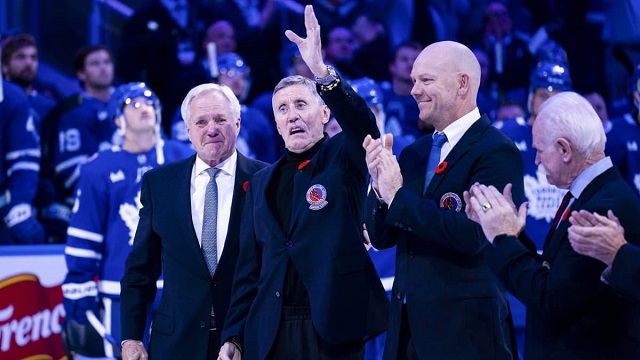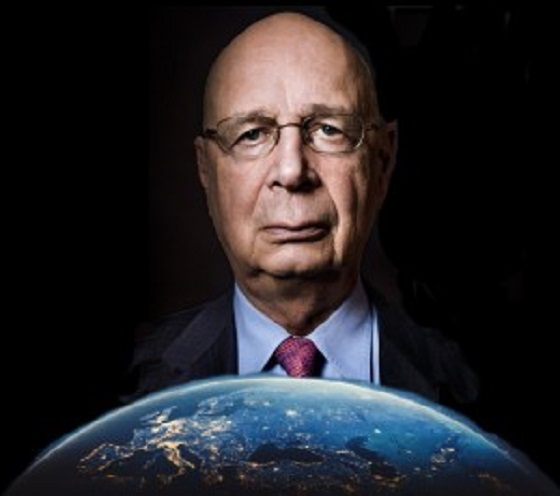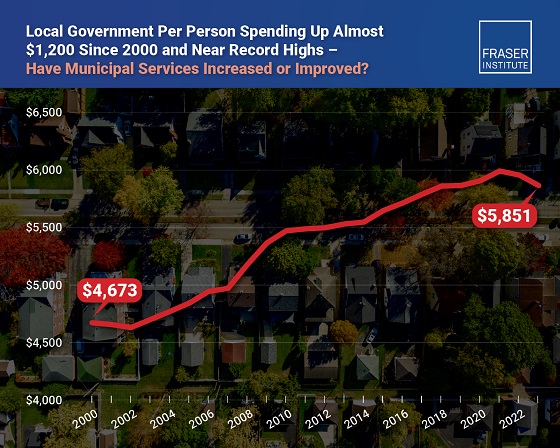Bruce Dowbiggin
How Swede He Was: Borje’s Battle Becomes A TV Series

Borje. You know you’re famous when you can go by a single handle. In Canada, that was the legacy of Borje Salming. The publicity has begun for the six-part TV series Borje: The Journey of a Legend— a dramatic tribute to HOF defenceman Salming who died of ALS at age 71 in late 2022.
It’s a recreation of Toronto’s recruitment of Salming in the Harold Ballard era of the early 1970s with chief scout Gerry McNamara— played by Jason Priestly— scooping him from northern Sweden. And his special— sometimes controversial—career in North America.
Salming was the precursor to a wave of Europeans about to invade the NHL— which was almost one-hundred percent Canadian at the time. The promo for the film shows highlights of his career from the attempts to intimidate him, his courage on the ice and his nasty facial injury in November of 1986. He still ranks as one of the Top 5 Swedes ever in the NHL.

The Swedish actor playing Salming— Viktor Skarsgard—had little idea just how popular Borje was. “Still blows my mind,” Skarsgard said in an interview with The Canadian Press. “Still hear stories and hear people talk about how much he meant (to Toronto). And I’m like, ‘Oh, I still haven’t understood it yet.’” Salming himself cooperated in the production prior to the onset of ALS, scouting locations in Toronto with producer Amir Chamdin.

Skarsgard comes from an acting family; father Stellan (Chernobyl) and older brother Alexander (Succession) are both internationally known actors. The film also. features Maple Leafs legends Darryl Sittler, Lanny McDonald and Tiger Williams.

The release of the movie recalled our column on Salming’s final, sad visit to Toronto in November of 2022. There are moments that only the world of sports can do justice. Plot lines that would be laughed at in story meetings are acceptable in sports. As they said for decades on Wide World of Sports, “The thrill of victory, the agony of defeat…”
Case in point: The two nights this November in which NHL Hall of Fame defenceman Borje Salming returned to his hockey home in Toronto for a sombre farewell to Maple Leafs fans. Stricken with cruel ALS, Salming found the strength to appear publicly on consecutive nights with former team mates in scenes that would make even the hardest heart weep. [Full disclosure: We lost our brother-in-law to ALS and our closest friend to the disease]
Supported by his former team captain, a weeping Darryl Sittler, Salming did his best to absorb the love from Leafs Nation at the Scotiabank Centre. A touching video of his heroics played as Salming dropped the ceremonial puck before the Toronto/ Vancouver contest.
His afflicted face reflected the cruelty of what is widely known as Lou Gehrig disease. (In a move only a Centre of the Universe fan can make, someone suggested that, because Gehrig played a century ago, the disease should now be known as Borne Salming disease so younger people can get cozy with it. Please.)
For those too young to have seen Salming in his prime, he was the template of the Swedish NHL defenceman to come. Arriving in a league hostile to anyone but Canadian players, he rose to the top at his position despite the chaos behind the scenes with the Harold Ballard’s Leafs. Think a more physical Nicklas Lidstrom, a more stylish Victor Hedman, a shot-blocking Erik Karlsson.
Long and lean, he was courageous in a time when Swedes, in the mocking words of Ballard, were said to go into the corner with eggs in their pocket and not break one. Borje stopped that talk. He put up 787 points during his career and made so many teammates look better playing next to him.
For an organization tortured by Ballard’s antics and continued mismanagement Salming was a beacon of hope for fans who have not seen even a Stanley Cup final series appearance since 1967. With Sittler and Lanny McDonald he offered a chance for respectability. A chance that— through no fault of Salming’s— never arrived.
Testament to how respected he was, Salming was never a target of abuse from rival fans. His skill and courage— he once absorbed 200-plus stitches in his face to repair a hideous skate gash and played three days latter— was admired even in super-rival Montreal. When he had personal substance problems, he was never mocked by even the most bitter foes.
Salming arrived just as international hockey became a thing with the 1972 Canada/ USSR series. The trickle of players like Salming soon became a steady flow of Europeans that culminated in the eventual arrival of Russians and other Soviet Bloc players in the 1980s and ‘90s. International games at the Canada Cup, Rendezvous Series and Olympics became the greatest contests many fans ever saw.
The six-episode series premiered Sunday — available exclusively in Canada on European streaming service Viaplay at Viaplay.com. It’s also available through Crave.
Bruce Dowbiggin @dowbboy is the editor of Not The Public Broadcaster A two-time winner of the Gemini Award as Canada’s top television sports broadcaster, he’s a regular contributor to Sirius XM Canada Talks Ch. 167. Inexact Science: The Six Most Compelling Draft Years In NHL History, his new book with his son Evan, was voted the seventh-best professional hockey book of all time by bookauthority.org . His 2004 book Money Players was voted sixth best on the same list, and is available via brucedowbigginbooks.ca.
Bruce Dowbiggin
The Game That Let Canadians Forgive The Liberals — Again

With the Americans winning the first game 3-1, a sense of panic crept over Canada as it headed to Game 2 in Boston. Losing a political battle with Trump was bad enough, but losing hockey bragging rights heading into a federal election was catastrophic for the Family Compact.
“It’s also more political than the (1972) Summit Series was, because Canada’s existence wasn’t on the line then, and it may be now. You’re damn right Canadians should boo the (U.S.) anthem.” Toronto Star columnist Bruce Arthur before Gm. 1 of USA/ Canada in The 4 Nations Cup.
The year 2025 is barely half over on Canada Day. There is much to go before we start assembling Best Of Lists for the year. But as Palestinian flags duel with the Maple Leaf for prominence on the 158th anniversary of Canada’s becoming a sovereign country it’s a fair guess that we will settle on Febuary 21 as the pivotal date of the year— and Canada’s destiny as well.
That was the date of Game 2 in the U.S./Canada rivalry at the Four Nations Tournament. Ostensibly created by the NHL to replace the moribund All Star format, the showdown of hockey nations in Boston became much more. Jolted by non-sports factors it became a pivotal moment in modern Canadian history.
Set against U.S. president Donald Trump’s bellicose talk of Canada as a U.S. state and the Mike Myers/ Mark Carney Elbows Up ad campaign, the gold-medal game evoked, for those of a certain age, memories of the famous 1972 Summit Series between Canada and the USSR. And somehow produced an unprecedented political reversal in Canadian elections.
As we wrote on Feb. 16 after Gm. 1 in Montreal, the Four Nations had been meant to be something far less incendiary. “Expecting a guys’ weekend like the concurrent NBA All Star game, the fraternal folks instead got a Pier Six brawl. It was the most stunning beginning to a game most could remember in 50 years. (Not least of all the rabid Canadian fanbase urging patriotism in the home of Quebec separation) Considering this Four Nations event was the NHL’s idea to replace the tame midseason All Star Game where players apologize for bumping into each other during a casual skate, the tumult as referees tried to start the game was shocking.
“Despite public calls for mutual respect, the sustained booing of the American national anthem and the Team Canada invocation by MMA legend Georges St. Pierre was answered by the Tkachuck brothers, Matthew and Brady, with a series of fights in the first nine seconds of the game. Three fights to be exact ,when former Canuck J.T. Miller squared up with Brandon Hagel. (All three U.S. players have either played on or now play for Canadian NHL teams.)
“Premeditated and nasty. To say nothing of the vicious mugging of Canada’s legend Sidney Crosby behind the U.S. net moments later by Charlie McEvoy.”
With the Americans winning the game 3-1 on Feb. 15, a sense of panic crept over Canada as it headed to Game 2 in Boston. Losing a political battle with Trump was bad enough, but losing hockey bragging rights heading into a federal election was catastrophic for the Family Compact. As we wrote in the aftermath, a slaughter was avoided.

“In the rematch for a title created just weeks before by the NHL the boys stuck to hockey. Anthem booing was restrained. Outside of an ill-advised appearance by Wayne Gretzky— now loathed for his Trump support— the emphasis was on skill. Playing largely without injured Matthew and Brady Tkachuk and McAvoy, the U.S. forced the game to OT where beleaguered goalie Craig Binnington held Canada in the game until Connor McDavid scored the game winner. “
The stunning turnaround in the series produced a similar turnaround in the Canadian federal election. Galvanized by Trump’s 51st State disrespect and exhilarated by the hockey team’s comeback, voters switched their votes in huge numbers to Carney, ignoring the abysmal record of the Liberals and their pathetic polling. From Pierre Poilievre having a 20-point lead in polls, hockey-besotted Canada flipped to award Carney a near-majority in the April 28 election.
The result stunned the Canadian political class and international critics who questioned how a single sporting event could have miraculously rescued the Liberals from themselves in such a short time.

While Canada soared because of the four Nations, a Canadian icon crashed to earth. “Perhaps the most public outcome was the now-demonization of Gretzky in Canada. Just as they had with Bobby Orr, another Canadian superstar living in America, Canadians wiped their hands of No. 99 over politics. Despite appeals from Orr, Don Cherry and others, the chance to make Gretzky a Trump proxy was too tempting.
We have been in several arguments on the subject among friends: Does Gretzky owe Canada something after carrying its hockey burden for so long? Could he have worn a Team Canada jersey? Shouldn’t he have made a statement that he backs Canada in its showdown with Trump? For now 99 is 0 in his homeland.”
Even now, months later, the events of late February have an air of disbelief around them, a shift so dramatic and so impactful on the nation that many still shake their heads. Sure, hockey wasn’t the device that blew up Canada’s politics. But it was the fuse that created a crater in the country.
Bruce Dowbiggin @dowbboy is the editor of Not The Public Broadcaster A two-time winner of the Gemini Award as Canada’s top television sports broadcaster, his new book Deal With It: The Trades That Stunned The NHL And Changed hockey is now available on Amazon. Inexact Science: The Six Most Compelling Draft Years In NHL History, his previous book with his son Evan, was voted the seventh-best professional hockey book of all time by bookauthority.org . His 2004 book Money Players was voted sixth best on the same list, and is available via brucedowbigginbooks.ca.
Bruce Dowbiggin
What Connor Should Say To Oilers: It’s Not You. It’s Me.

This just in. Connor McDavid is on track to be the greatest hockey player ever. Apologies to the Gretz/ Orr/ Howe partisans. But if he stays healthy and gets the hell out of Edmonton he will be hands-down the best ever. He is equal measures of Gretzky’s intuitive genius, Orr’s 200-foot impact. Howe’s sandpaper attitude. It’s an honour to watch him.
We know, we know, if he is so great why couldn’t he get the Oilers over the hump, particularly the past two seasons against Florida? Gretz, Orr, Howe all won Stanley Cups while leading their teams. So did Mario Lemieux. Fair point. But Howe in his prime never played more than two series in the postseason. Orr often played just three. Gretz teams often bagelled opponents for years.
McDavid’s teams the last two years have had lengthy paths to tred. Just getting to a Final is a huge accomplishment. Repeating that feat (going seven then six games) in the Final is humungous. It’s exhausting, mentally and physically. That’s why so few teams do it.
Still, that’s not the point. We have been asking since 2018 how long McDavid will hobble his legacy by staying in Edmonton. Those early columns were talking about a team that missed playoffs or did a Maple Leafs fold early on. The current iteration of the Oilers has gotten to the brink. They have players who’ve been around a while. And fell short.

Now the Oilers are an old team, the oldest in the regular season, the oldest team in the playoffs this year. Teams carrying more than two plus-30 players have a miserable track record of winning Cups. And the Oilers have zero Grade A prospects in the pipeline. At 28, McDavid is a young guy on their roster. Not good.
As the hockey world knows he can sign an extension on July 1 to follow the contract he has now. Money will be no object as the NHL salary cap (finally) goes up. Term will be forever if he wants it. His running mate Leon Draisaitl is tied up till age 36. The Oilers desperately want him to stay after the Gretzky fiasco in 1988. So what is he going to do? He’s got national endorsements in Canada, but in the U.S.? Connor who? The sky is the limit.
Oilers fans palpitating over the future of their star were looking for hints as to his mindset when he met the media following the Oilers loss in six games to Florida. It was a chance for him to say he’s staying, he loves the place, his wife is committed to freezing every winter in the Alberta capital. He could have cried and said “Mess told me not to do that”.
What they got was a lot of maybe. Yes, he kept the doors open, but he said he needs time to see the landscape till the clock tolls on July 1. He needs to examine whether this veteran team has a future. Because in a few years they’ll be like Howe’s Detroit teams in the 60s, a played-out dynasty.
Under NHL rules no team can contact him about signing. But he will know that everyone will want him at a max deal. Some will offer no state income tax. Some will have teams on the cusp of the Cup he desires (see Matthew Tkachuk to Florida in 2023). Some will be giant U.S. media cities with the ability to make him what Gretzky became in L.A. Some will offer warm weather and anonymity away from the rink.
These are all knowns. For the impatient, teams can approach the Oilers now about a trade. So he’s holding all the cards. It’s prom night and he gets his pick. Unless Edmonton (gulp) jumps the gun on a trade.

Let’s play Peter Pocklington for a minute here and see this from the Oilers’ POV. Pocklington traded Gretzky, because Peter was broke. That’s not Darryl Katz’s problem. His problem is his team is about to get ancient. There is no McDavid for Draisaitl on the horizon. Plus, you’ve tied up several players (Nurse, Nugent Hopkins) to contracts they can’t hope to play up to. And youngish players coming into free agency.
He must address the other side of the 1988 Gretzky equation. How to get full market value for a superstar? Which means getting another star to help Draisaitl going forward. You could let the two play out the string together in Edmonton, of course. But with so many strong teams in Colorado, Vegas, Dallas, even Winnipeg that would be a hard slog. And by the time you realized that it would be too late.
The smart play, as Michael Corleone would say, is move fast. Trade McDavid before the start of next season for a boatload of young players to supplement Draisaitl. Take a short-term PR hit but live to compete another day.
Of course, Katz is not going to trade McDavid. He’s a fanboy owner. He’ll throw the Rexall kitchen sink at him and hope that’s enough. McDavid will be patient (if he’s smart). The “will-he-sign?” drama will bleed into the next season, a millstone for the team. The distractions will mount before Edmonton realizes that an unsigned McDavid is a liability. And Connor on a max deal with a minus team is no bargain either.
Remember the re-structured Oilers won a Cup in 1990 using Mark Messier and the players they got for Gretzky. Think about it, Edmonton.
Bruce Dowbiggin @dowbboy is the editor of Not The Public Broadcaster A two-time winner of the Gemini Award as Canada’s top television sports broadcaster, his new book Deal With It: The Trades That Stunned The NHL And Changed hockey is now available on Amazon. Inexact Science: The Six Most Compelling Draft Years In NHL History, his previous book with his son Evan, was voted the seventh-best professional hockey book of all time by bookauthority.org . His 2004 book Money Players was voted sixth best on the same list, and is available via brucedowbigginbooks.ca.
-

 Business2 days ago
Business2 days agoOttawa Funded the China Ferry Deal—Then Pretended to Oppose It
-

 COVID-192 days ago
COVID-192 days agoNew Peer-Reviewed Study Affirms COVID Vaccines Reduce Fertility
-

 MAiD2 days ago
MAiD2 days agoCanada’s euthanasia regime is not health care, but a death machine for the unwanted
-

 Business1 day ago
Business1 day agoWorld Economic Forum Aims to Repair Relations with Schwab
-

 Alberta2 days ago
Alberta2 days agoThe permanent CO2 storage site at the end of the Alberta Carbon Trunk Line is just getting started
-

 Alberta1 day ago
Alberta1 day agoAlberta’s government is investing $5 million to help launch the world’s first direct air capture centre at Innisfail
-

 Business2 days ago
Business2 days agoMunicipal government per-person spending in Canada hit near record levels
-

 Business1 day ago
Business1 day agoA new federal bureaucracy will not deliver the affordable housing Canadians need





